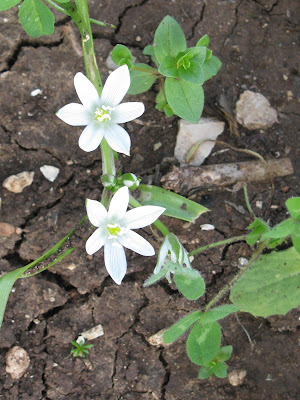The Shokeda Forest is a eucalyptus forest located east of Moshav Shokeda in
the north-western Negev region (the southern part of Israel, near the Gaza strip).
The
KKL-JNF
(Jewish National Fund) began to plant the forest in the 1950s. The woodland
includes eucalyptus, tamarisks, pines and casuarinas, and it is studded with
well-preserved heritage sites, play areas, picnic sites and cycling trails.
According to a survey conducted by the Israeli Nature and Parks Authority,
the anemone is the most recognised and loved flower by Israelis. In 2013
anemones were chosen as the national flower of Israel. Though the red
anemones can be found across Israel, the flowers in the north are red and
white, but in the south, the anemones are only red. This is thought to be
because the southern anemones are "less spoilt" and can survive the
harsher desert climate.
After our walk through the forest, we drove the short distance to the Black
Arrow Memorial, Andartat Hetz Shahor in Hebrew. It is located in
the Gaza Envelope,
the populated area of Israel that is within 7 kilometres of the Gaza
Strip border.
The Black Arrow Memorial, which overlooks the Beit Hanoun, Beit Lahia,
Jabalia and Gaza city area and is situated only 900 metres from the border
with the Gaza Strip, commemorates the battle heritage of the Paratroop
Brigade that fought in reprisal operations in response to enemy
infiltrations into Israel in the years leading up to the 1956 Sinai Campaign. The memorial contains stone pillars bearing descriptions of the
paratroopers retaliatory actions, as well as schemes of battles fought by
the corps. Another memorial commemorates the fallen soldiers. Audio
explanations in Hebrew and English at the site explain the background to the
retaliatory actions and operations in the then Egyptian-held Gaza and the
Jordanian-held West Bank.
Some background information. In the 1950s and 1960s Israel suffered loss of
lives and property damage from infiltrators from neighbouring countries. The IDF (Israel Defence Forces) conducted military reprisal operations as a deterrent. Between the end
of the War of Independence and the Sinai Campaign of 1956, over five hundred
Israelis were killed in terrorist attacks and over a thousand others were
injured. Commando Unit 101 was established in August 1953 to provide a
military response. The unit carried out cross-border patrols and operations
for five months until it merged with the 890 Paratroop Battalion. The
commander of Unit 101 was Major Ariel Sharon, who later became a general
and politician who served as the 11th Prime Minister of Israel from March 2001
until April 2006.
In 1989 a group of 890 Battalion veterans established a lookout point in
memory of their commander, Captain Saadia Elkayam, who fell in battle during a
reprisal operation in Gaza in February 1955. One year later the Black Arrow
Association was founded. Black Arrow was the IDF code
name for the Gaza operation in which Elkayam fell. Working together with
the regional council in the north-western Negev and KKL-JNF, the Association
transformed the Black Arrow site into an impressive memorial that perpetuates
the memory and legacy of the fallen paratroopers and tells the story of the
reprisal operations.
Close to the memorial is the old Armistice Commission building and a site that
commemorates the first water pipeline to the Negev. The Armistice House is a
single-storey house with a tiled roof which served as a venue for meetings
between Israeli armistice commission delegations and representatives from
Egypt when they were negotiating a ceasefire. The building witnessed a number
of important events: after Israel's War of Independence it hosted talks on the
armistice agreement with Egypt, which was signed in Rhodes; it served as a
meeting place where Israelis and Egyptians could discuss infringements of
agreements and settle their differences; the captives from the
Bat Galim, the ship seized by the Egyptians after it attempted to pass through the
Suez Canal in 1954, were returned to this spot; and the bodies of IDF soldiers
who fell in the 1956 Sinai Campaign and other military operations were brought
here too.
At a bend in the road leading to the Black Arrow Memorial a rusted metal
standpipe bearing an explanatory sign commemorates the first water pipeline to
the Negev. In 1947 Mekorot, Israel’s national water company, drilled fifteen
wells in the area and a pipeline was laid to carry water to the three KKL-JNF
outposts and the
eleven points of Jewish settlement established in the Negev at the end of the Yom Kippur
fast in 1946. The pipeline crossed this site.
Photo credit: Yaakov Shkolnik
* This post has been shared on Sharon's Souvenirs, Wandering Camera, Nature Notes, Wordless Wednesday (on Tuesday), My Corner of the World and Friday Bliss.












































































